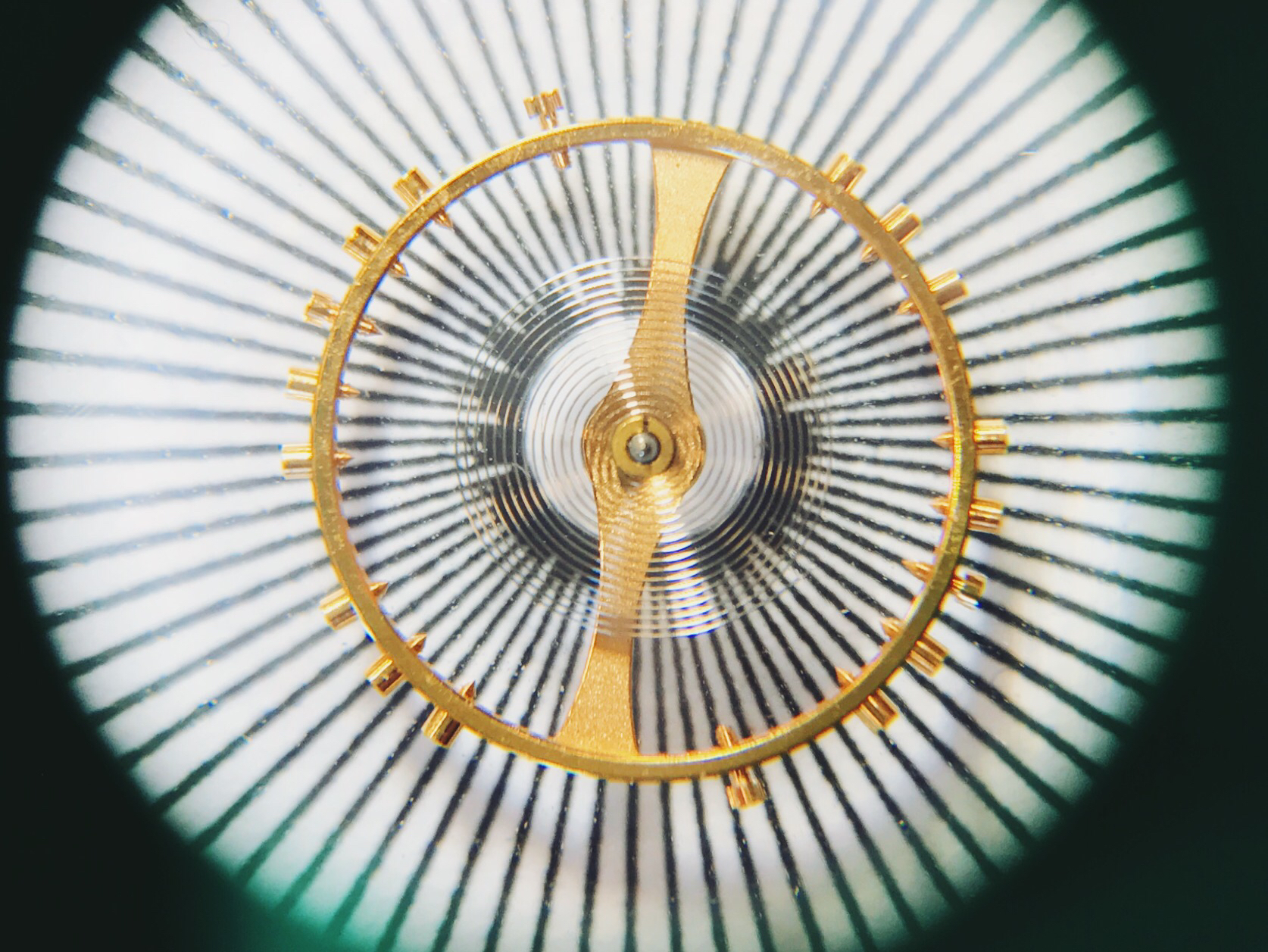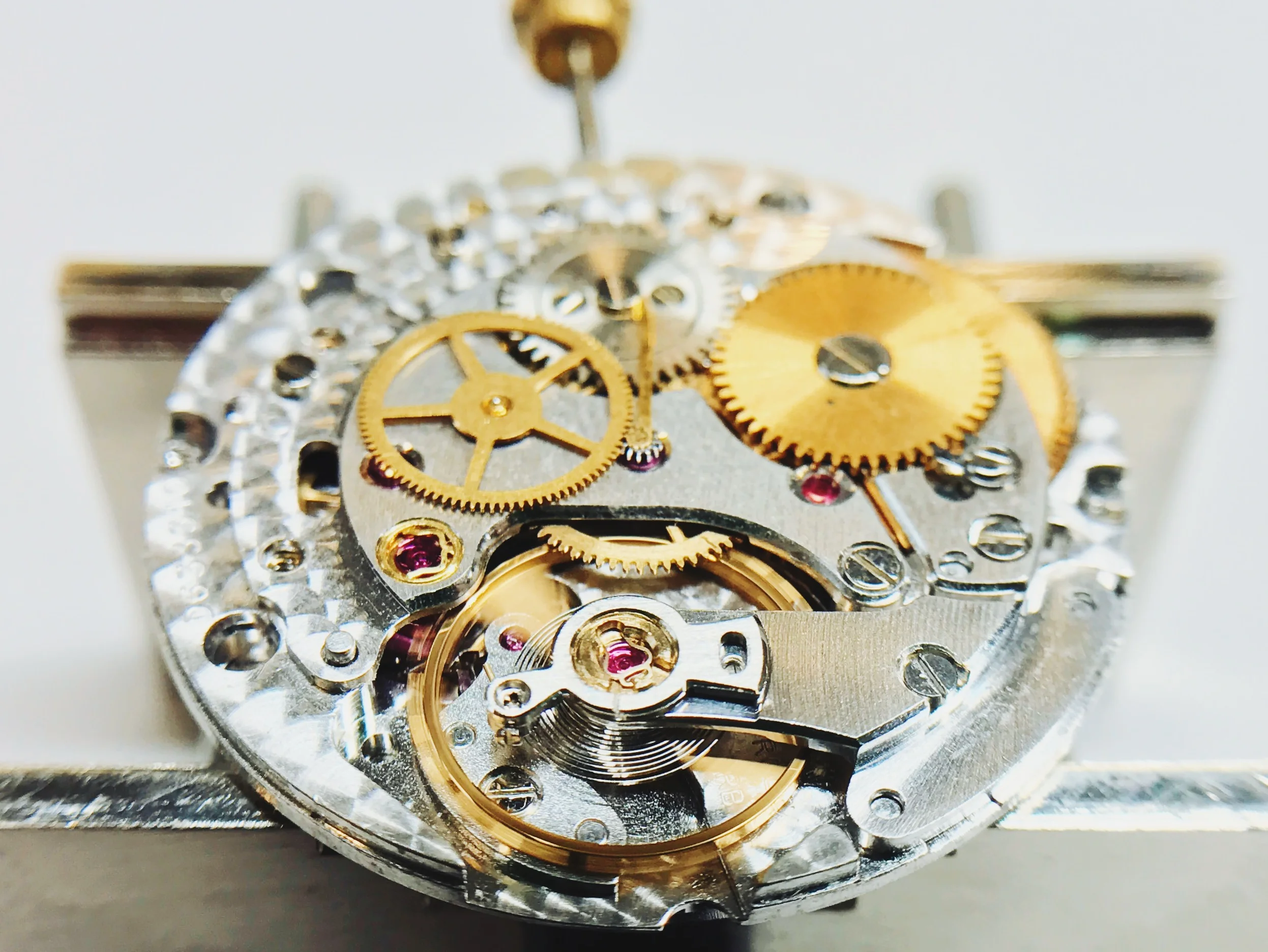Hairsprings: Tick Take Two

With the overcoil formed on my Rolex hairspring, the movement is now running properly and is ready to be regulated.
The 1575 is designed to use an overcoil hairspring, but my instructor previously supplied me with a different balance bridge, which had a stud carrier for a flat spring. That allowed me to find the exact vibrating point while in the watch before forming the overcoil, making it that much more likely to bend it correctly.
Forming the overcoil on a "real" spring was nerve-wracking, but I did it correctly. Hard to imagine that we're less than three months into this program.
Now that the hard part is over, it's time to regulate and adjust the balance. Rolex balance wheels use tiny "Microstella" screws, which vary the wheel's inertia to adjust the rate. Those are easier enough to set in a single position, but tiny variances in the spring and the balance wheel will be more difficult to account for... Those will call for dynamic poising, which I will cover soon.
Watchmaking student at the Lititz Watch Technicum, formerly a radio and TV newswriter in Chicago.





